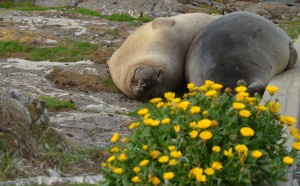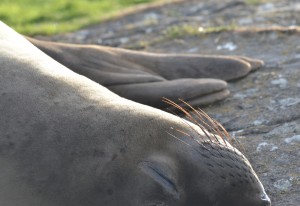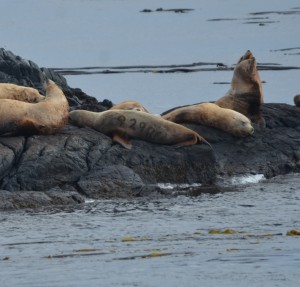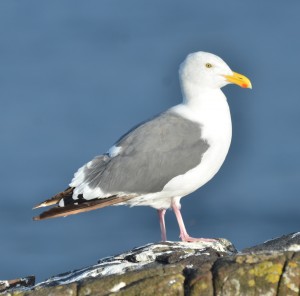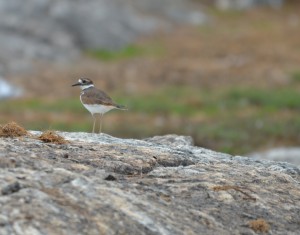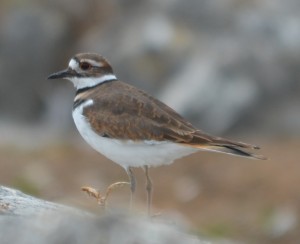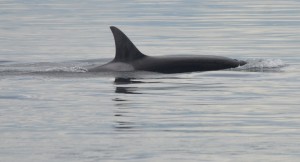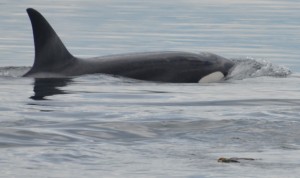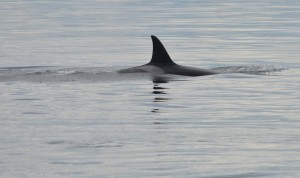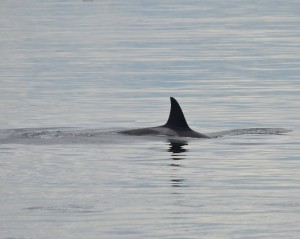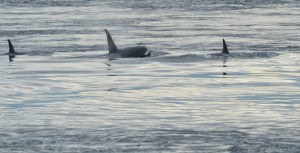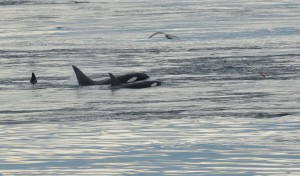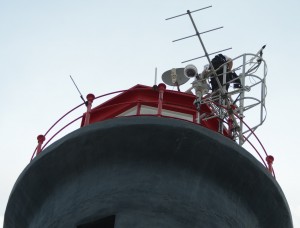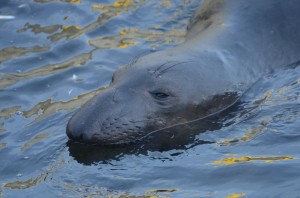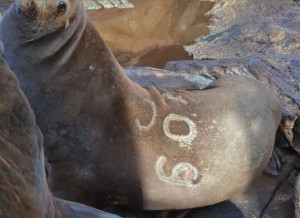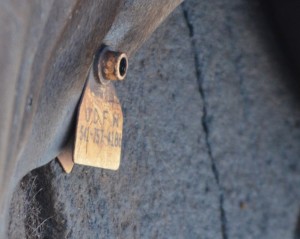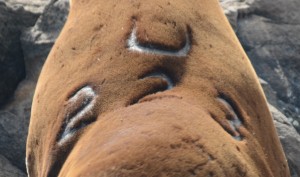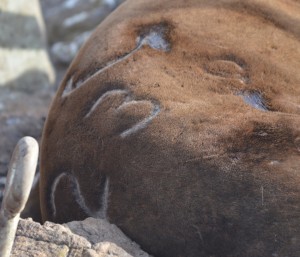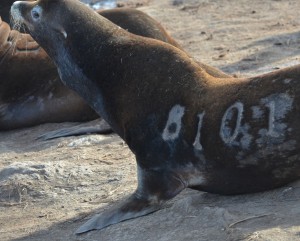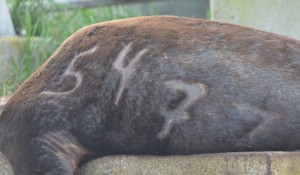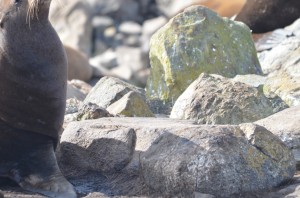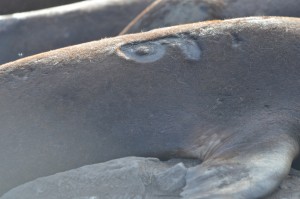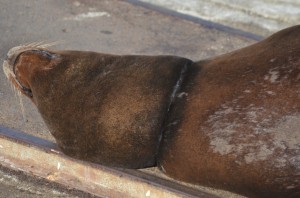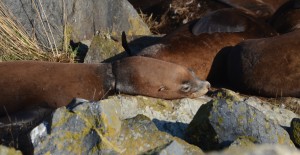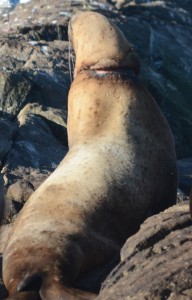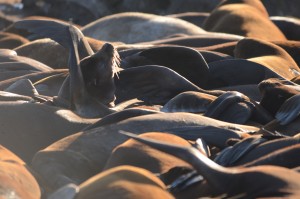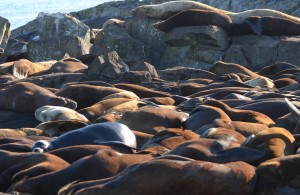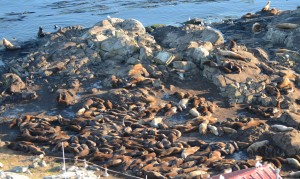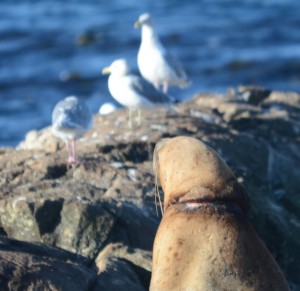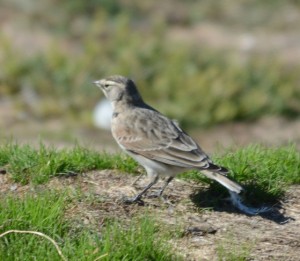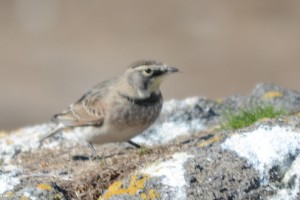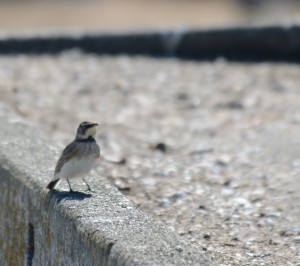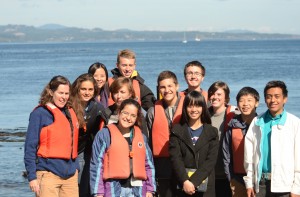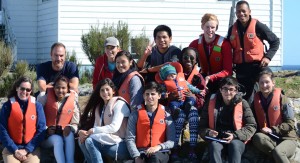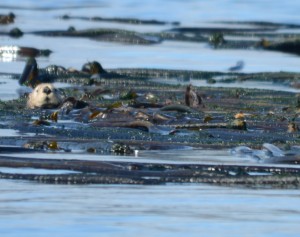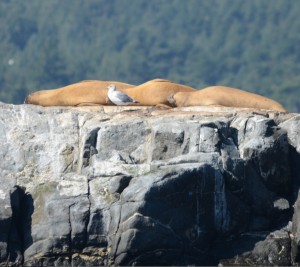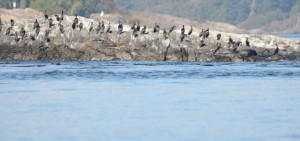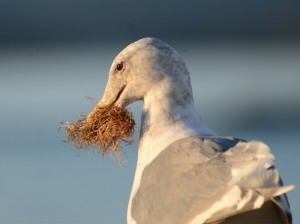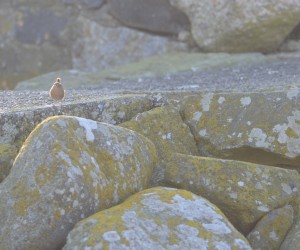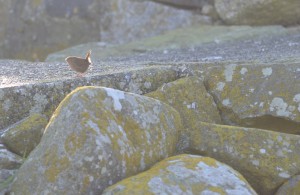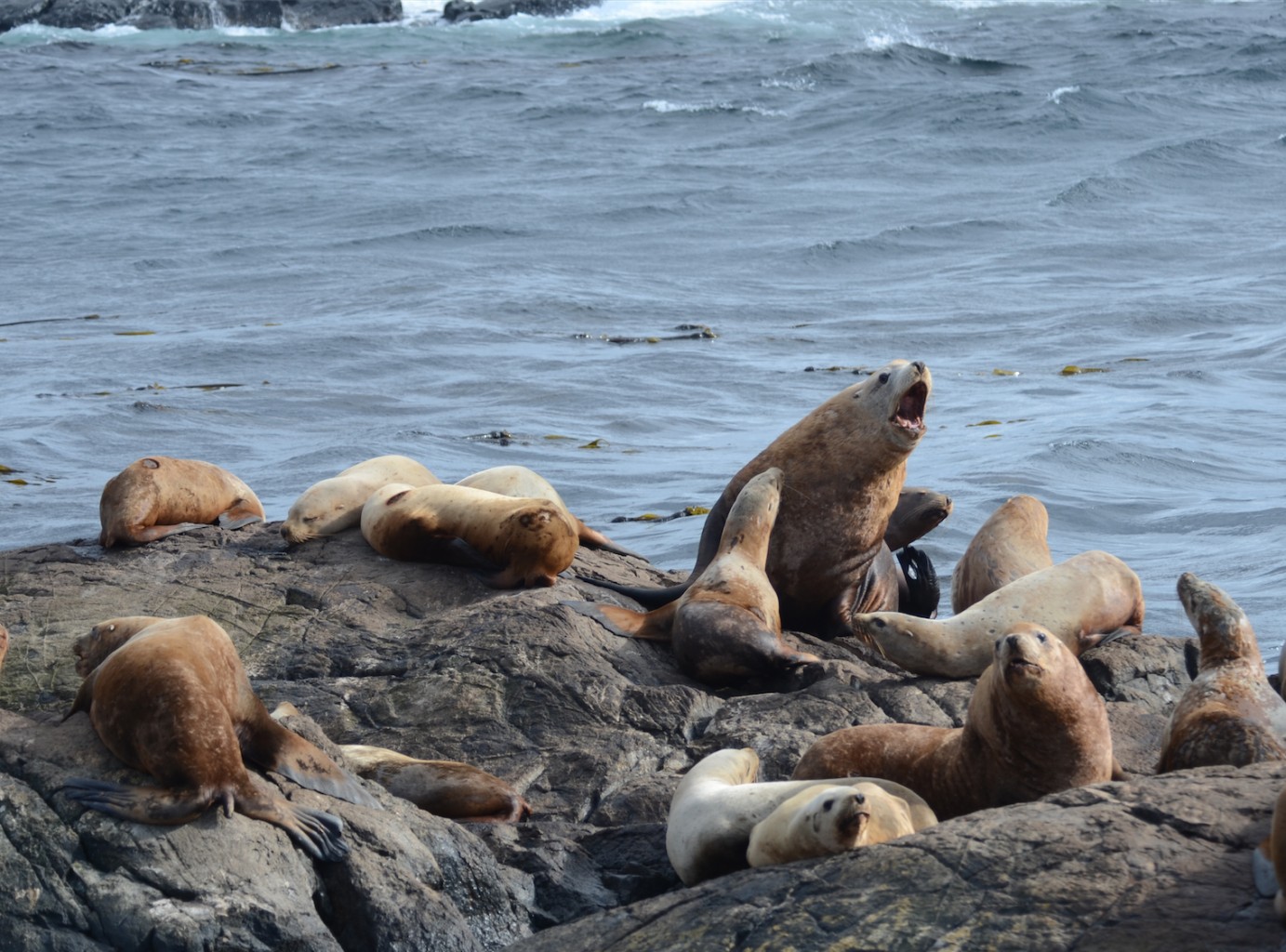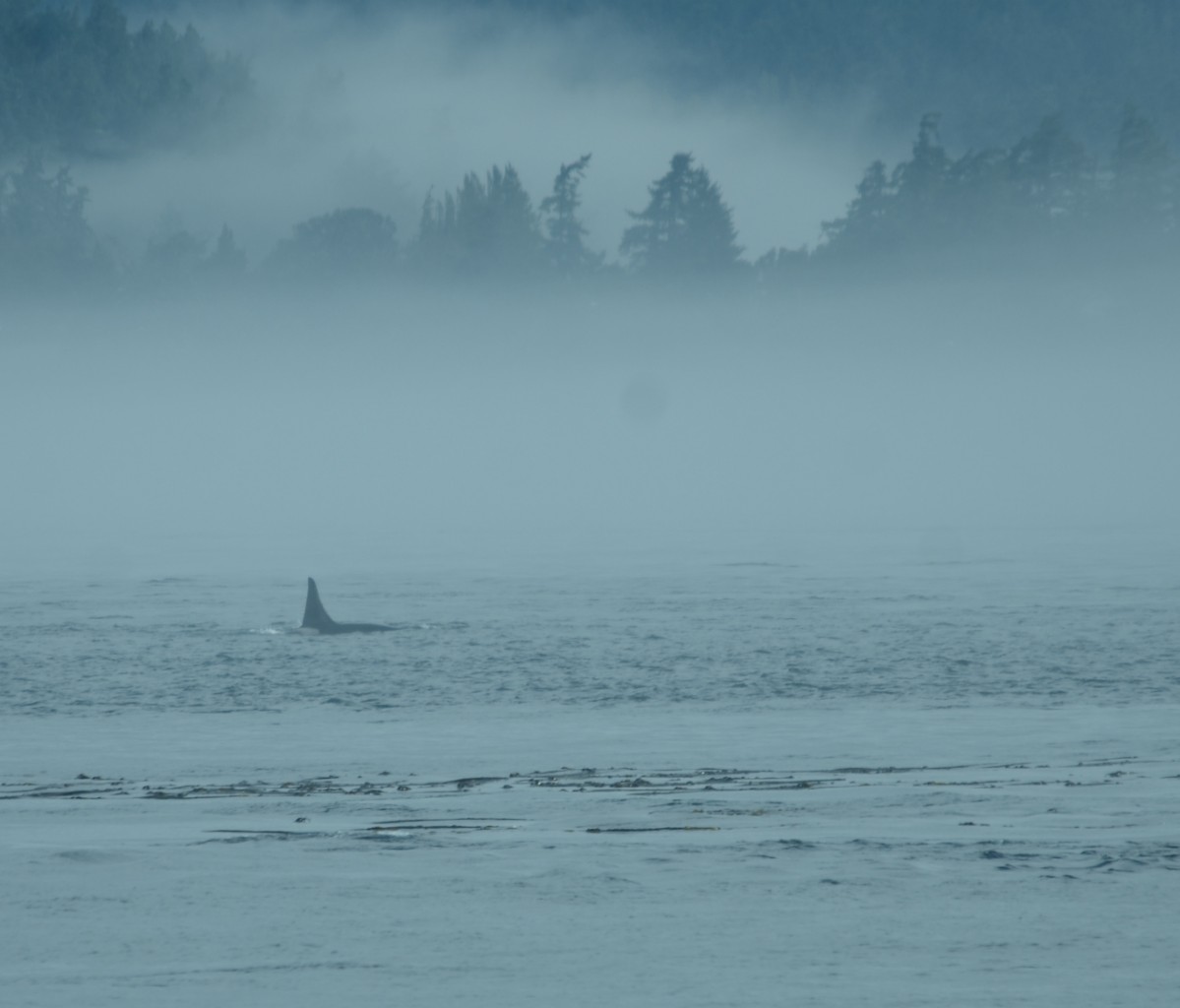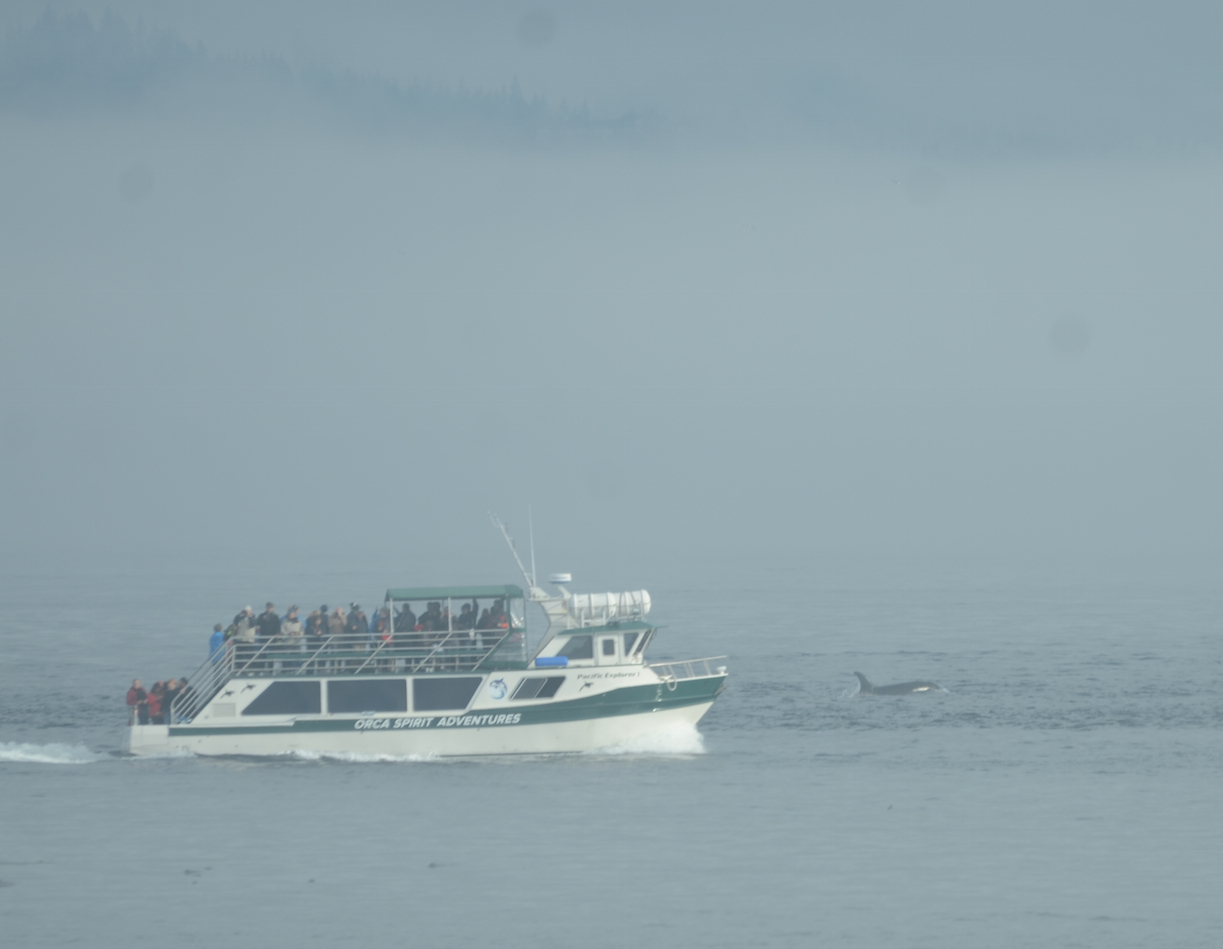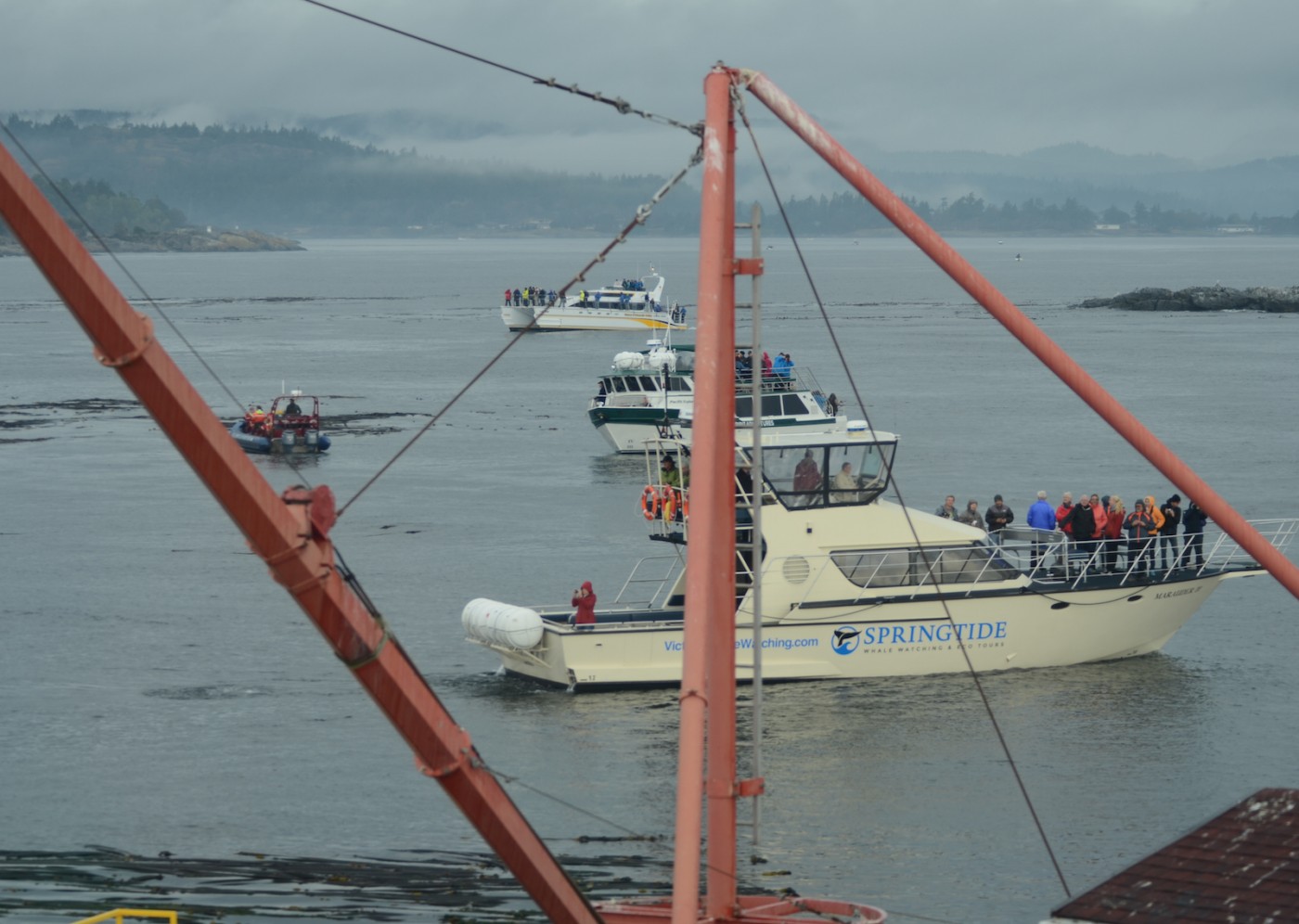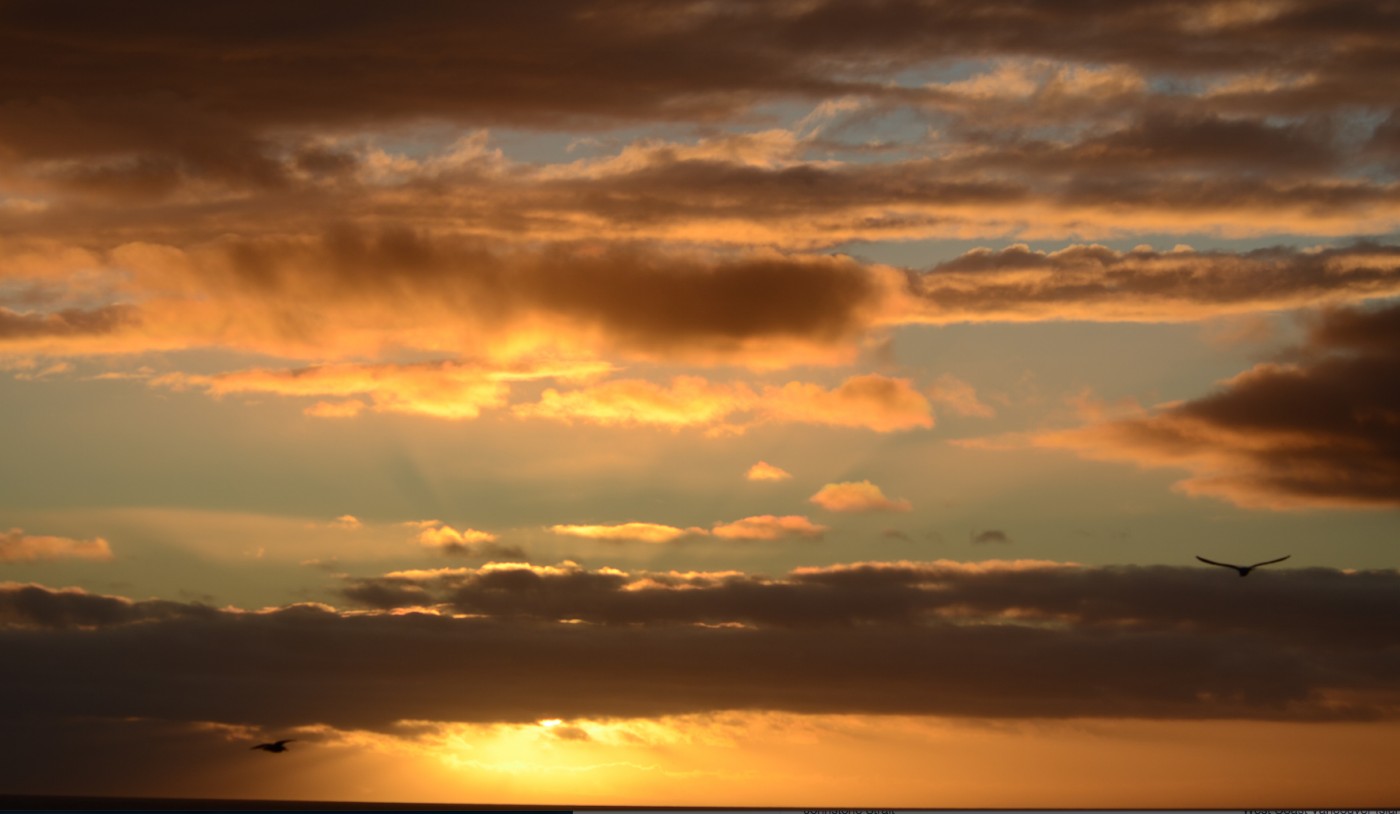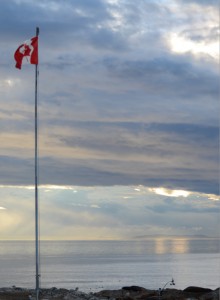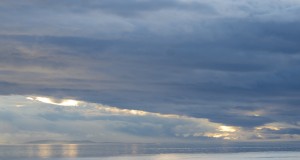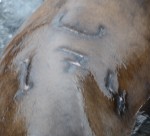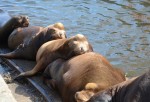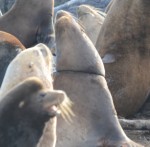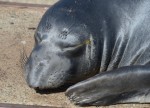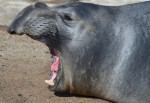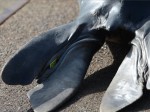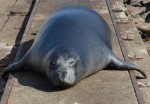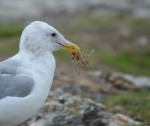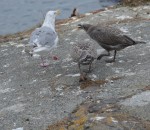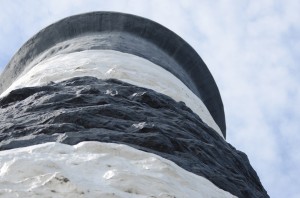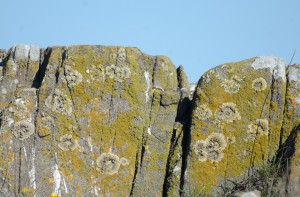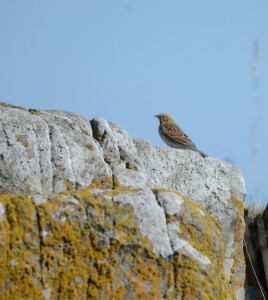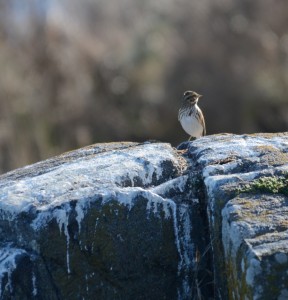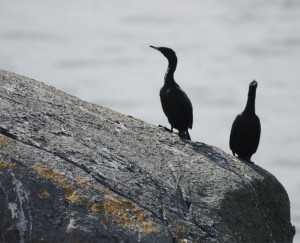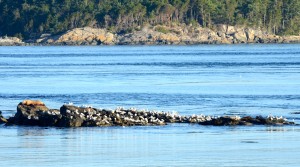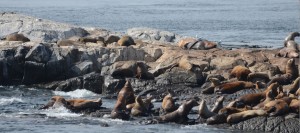The sun set behind Makah and Clallam territory on the American side of the Strait tonight meaning that autumn is the new reality. What a glorious end to a day that just kept improving. Serious clouds followed earlier heavy fog and the threat of rain was kept at bay by light and variable winds, most of the day. The wind finally turned to west 15 – 20 and the sky cleared. The barometer stayed above 1015 all day and the tendency now is rising, which bodes well for tomorrow. The forecast is calling for some clouds and a 30% chance of showers tomorrow followed by a mix of sun and cloud.
There wasn’t much vessel traffic in reserve today, just a couple of well behaved pleasure boats passing through and three whale watching vessels.
The young male Northern Elephant Seal #5850 returned to haul out up on the grass at Great Race Island today. He was tagged in Ana Nuevo Island as a weaner in 2012 and has now lost all but one of his tags. Today he had a male companion about the same size and they spent a little time sparring before falling into deep sleeps. The little female he was with last time spent most of the afternoon asleep underwater, on the bottom, just off the jetty.
Every night at Race Rocks just after dark I hear Killdeer calling and today I had a chance to see them in daylight, which is a rarity; beautiful birds with very large eyes.
I would love to know where they usually go during the day and why they fly out to Great Race for the night.
The number and diversity of gulls here right now is a little staggering and there are a few that I am having trouble identifying. There is one with yellow eyes like a Herring Gull but smaller in stature with a smaller less fierce looking head. Do Thayers and Herring Gulls hybridize now?
Other than re-stringing the jetty fence, chores were routine today and there were no visitors.
- The animal on the right is 5850 who is three and a half years old. He was tagged as a weaner at Ano Nuevo Island in Northern California in January 2012.
- #5850’s vibrissae are critically important when hunting in the dark. Note the banding, spiral pattern.
- Stellers Sea Lion in the middle is branded 929R meaning it was weaned in the very south end of the Oregon coast.
- Looks like a Thayers Gull except for the yellow eyes and pale pink legs which make it look like a Herring Gull.
- There were two Killdeer here during daylight today.
- The elusive Killdeer.

